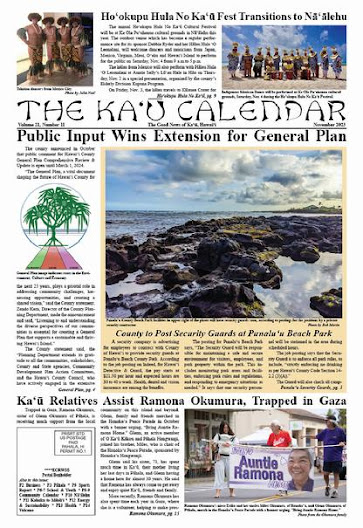Program Overview: Farmers will be matched with a mentor to help guide them on the steps to transitioning to a certified organic operation through 90 hours of mentorship over a two-year period. Mentors will be experts in the field and will provide guidance on farming practices, methods of management, record keeping, and the application process. There are available resources to help make the transition (i.e. soil tests and similar) as well as a $500 stipend per farmer. Mentors will need to have a minimum of three years of experience working in a certified organic operation and will be compensated at an hourly rate.
Who should apply? HFUU is seeking all interested farmers in crop production, livestock, value-added, or wild harvest. Applicants must have a desire to make the transition to certified organic and should be actively farming. New farmers are also encouraged to apply if they are planning on becoming a certified organic operation.
How to become involved: Those interested in participating as a farmer or becoming a mentor, reach out to Christian Zuckerman at organictransitions@hfuu.org.
 |
| Program origin:https://content.govdelivery.com/accounts/USFNS/bulletins/34a1c78 |
The average credit score in Hawai‘i is 715, which ranks ninth highest in the U.S. Cassandra Happe, WalletHub Analyst. said, "It is encouraging to see these positive credit scores, despite the challenges that many consumers are facing with the current economy and inflation. These high scores are a sign that even though many Americans are struggling with financial obstacles, they are still prioritizing their debts."
KAPAPAHULIAU CLIMATE RESILIENCE PROGRAM will receive $20 million, according to U.S. Senator Mazie K. Hirono, a member of the Senate Energy and Natural Resources Committee, and local Hawaiian organizations can apply for funding. The program aims to help strengthen climate resilience in the Native Hawaiian community. The funding will support the U.S. Department of the Interior’s Office of Native Hawaiian Relations, which manages Kapapahuliau Climate Resilience Program. The program promises to provide Native Hawaiian organizations with resources to navigate the effects of climate change.
Hirono said, “Compared to the rest of the country, Hawai‘i is unique in many ways—our food, our communities, our local culture—and the climate challenges we face are no exception. Sea level rise,
The funding is provided through the Inflation Reduction Act, which Hirono helped pass into law in 2022. The funding follows the Biden-Harris Administration’s release of the Fifth National Climate Assessment, a congressionally mandated report assessing the science of climate change in the United States, its impacts, and options for reducing present and future risk, including specific impacts on Hawai‘i and U.S.-Affiliated Pacific Islands.
Office of Native Hawaiian Relations will host two 120-minute virtual pre-proposal informational sessions on Nov, 29 and Dec. 13 at 2:30 p.m. to provide an overview of the Kapapahuliau Program and address questions for interested applicants. The deadline to apply for funding is Thursday, Feb. 29, 2024.
To read comments, add your own, and like this story, see facebook.com/kaucalendar. See latest print edition at kaucalendar.com, in the mail and on stands.
 |
| Trashcano eruption is created with liquid nitrogen during a school visit at UH Hilo. UH Hilo photo by Meghann Decker. |
During volcanic crises, USGS Hawaiian Volcano Observatory plays a pivotal role, sharing information on activity and associated hazards with close partners on the Island of Hawai‘i, including the Mayor's Office, Hawai‘i County Civil Defense Agency, Hawaiʻi Volcanoes National Park, and Hawai‘i Emergency Management Agency. However, during non-crisis periods, HVO maintains a range of lesser-known partnerships with state and county agencies.
To fulfill this educational mission, Center for the Study of Active Volcanoes launched an array of public outreach programs in the early 1990s, including community seminars, teacher training workshops, and school visits across the Island of Hawaiʻi. The team quickly recognized the eagerness of schoolchildren to learn about natural hazards, particularly enjoying hands-on demonstrations such as the tsunami wave tank and baking soda volcano. The outreach endeavors even extended to preschools, adhering to the adage, "If you plan for a year, plant kalo. If you plan for ten years, plant koa. If you plan for 100 years, teach the children."
%20Meghann%20&%20Sadie%20and%20kids.jpg) |
CSAV staff Meghann Decker and UH Hilo Geology Alumni Sadie Nguyen talk with children at a Science Night. UH Hilo photo by Darcy Bevens. |
The COVID-19 pandemic necessitated suspending face-to-face school visits. However, the Center for the Study of Active Volcanoes' staff is happy to have recently resumed in-person public outreach through classroom visits and community events. Hawaiian Volcano Observatory remains steadfast in its commitment to monitoring volcanoes in Hawai‘i, gathering data, assessing potential hazards, and disseminating information to relevant agencies and the public. Working in tandem emphasizes the importance of educating the younger generation. By engaging and educating youths on volcanic hazards, we can create a more resilient and informed community prepared to respond to and mitigate the impact of these events.
While teaching natural hazards to schoolchildren, Center for the Study of Active Volcanoes staff noted that students exhibited a strong interest in science and local geology. Consequently, the outreach program expanded to include educational sessions for school groups on rocks and minerals, with a specific focus on Hawaiian volcanic products like pāhoehoe, pumice, and Pele's Hair. Students are encouraged to consider STEM (Science, Technology, Engineering, Math) courses, and, at events such as Career Day for high school groups, they are recommended to explore science programs at UH Hilo and Hawai‘i Community College.
Center for the Study of Active Volcanoes' efforts are supported by the UH Hilo Geology department to facilitate mentorship, and to support science fair participants and visiting schools. Students are exposed to analytical equipment and spectacular demonstrations such as the Trashcano, a simulated volcanic eruption with a 50-gallon trash can and liquid nitrogen.
 |
| Double Ānuenue on Kīlauea Volcano On Kīlauea volcano this morning, down Chain of Craters Road, NPS photographer Janice Wei captured this double ānuenue near Muliwai a Pele overlook. See more on Hawai‘i Volcanoes National Park at https://www.facebook.com/hawaiivolcanoesnps |
Working together, HVO, CSAV, and UH Hilo educate and inform Island of Hawaiʻi kamaʻāina. We hope to better prepare people of all ages, from keiki to tutu, for the range of natural hazards associated with volcanoes in our backyard that can potentially impact them. Look for CSAV at upcoming community events such as career days, Girl Scouts STEM, West Hawai‘i Exploration Fair, and school science nights.
To learn more, visit the CSAV outreach page: https://hilo.hawaii.edu/csav/outreach.php.
Kīlauea is not erupting. Its USGS Volcano Alert level is ADVISORY.
The unrest associated with the intrusion that began in early October southwest of Kīlauea's summit continues. An earthquake swarm located immediately south of Kīlauea's caldera. which began Friday, Nov. 10, persists with moderate levels of seismicity and HVO continues to monitor this activity. Unrest may continue to wax and wane with changes to the input of magma into the area and eruptive activity could occur in the near future with little or no warning. The most recent sulfur dioxide (SO2) emission rate for the summit—approximately 100 tonnes per day—was measured on Oct. 19.
Mauna Loa is not erupting. Its USGS Volcano Alert Level is at NORMAL.
Webcams show no signs of activity on Mauna Loa. Summit seismicity has increased slightly in the past month, while ground deformation indicates slow inflation as magma replenishes the reservoir system following the 2022 eruption. SO2 emission rates are at background levels.
No earthquakes were reported in the Hawaiian Islands during the past week.
HVO promises to continue to closely monitor Kīlauea and Mauna Loa. Email questions to askHVO@usgs.gov.
 |
| 7,500 printed, 5,000 in the mail. |









%20copy.jpg)
.JPG)




.png)